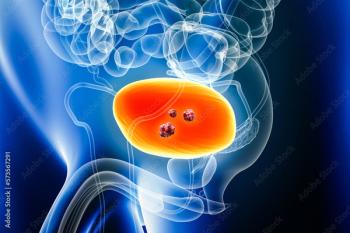
Asembia AXS25: Cell and Gene Therapies Enter New Phase of Growth in Specialty Pharmacy
Key Takeaways
- CGTs are expanding beyond oncology into fields like neurology and rheumatology, with over 200 therapies projected by 2030.
- Financial and reimbursement challenges in CGTs require improved workflows and patient access to facilitate scalability.
As the cell and gene therapy pipeline expands, experts at Asembia’s AXS25 Summit emphasized the need for error-proof logistics, value-based access strategies, and coordinated reimbursement models.
Cell and gene therapies (CGTs) are quickly moving to the forefront of specialty pharmacy and have become central to the future of pharmaceutical innovation, according to a panel discussion held during a business session titled “Cell, Gene and Beyond: What’s Working and Where Do We Go Next,” at Asembia’s AXS25 Summit, which takes place April 27 through May 1 in Las Vegas, Nevada.1
“You can’t help but be excited for what the future holds in the advanced therapy space,” Fran Gregory, PharmD, MBA, vice president of emerging therapies at Cardinal Health, said during the presentation.1
The expert panel included Gregory, Anna Purdum, vice president and head of Global Market Access at Orca Bio, and Rich Prest, senior principal of Blue Fin Group. Each panelist offered varying insights on the vast landscape of CGTs, with Gregory’s remarks focusing on the current trends in the field, Purdum’s highlighting challenges those working with CGTs face, and Prest showcasing potential solutions to those challenges.1
A New Phase for Cell and Gene Therapies
Advanced therapy is at an inflection point, poised for broad and rapid growth, Gregory explained to set the stage for the rest of the panel discussion. Moving beyond their origins in oncology, CGTs have expanded into realms including neurology, rheumatology, ophthalmology, cardiology, and rare diseases—though advanced therapies continue to dominate the oncology and hematology development spaces.1
Sales of these therapies are growing, too. Gregory presented data showcasing the increase in both the number of therapies available and sales of such medications; the cumulative number of CGTs on the market increased from 50 in 2024 to 64 in 2025, with projections pointing to over 200 being available for use by 2030. Additionally, by 2030, projections indicate sales of advanced therapies will grow to $80 billion.1
Gregory showcased dozens of groundbreaking medications set to receive regulatory updates soon that could transform their respective disease states. Some of the novel medications included UX111 (Ultragenyx), a gene therapy for patients with Sanfilippo syndrome type A (Prescription Drug User Fee Act [PDFUA] date of August 18), and PRGN-2012 (Precigen), a gene therapy for human papillomavirus 6 and 11 recurrent respiratory papillomatosis (PDUFA date of August 27).1
Other promising treatments with expected approvals in the future were featured by Gregory, such as Orca-T (OrcaBio), an allogeneic cell therapy in phase 3 trials for acute myeloid leukemia and other oncologic conditions; ABBV-RGX-314 (Abbvie; RegenxBio), a phase 3 gene therapy for wet age-related macular degeneration and diabetic retinopathy; and BIIB059, a phase 3 monoclonal antibody (mAB) being designed for cutaneous lupus erythematosus and systemic lupus erythematosus.1
The future promises of the advanced CGT pipeline are clear. But amid all the pipeline growth, shifts in workflows will be necessary to facilitate scalability and ensure patient access to medications. And challenges remain; a new report set to be released from Cardinal Health on the state of pharmacists in the advanced therapy industry finds that securing coverage and reimbursement is linked with numerous pain points for pharmacists. Furthermore, the report finds that financial burdens and issues dealing with prior authorization are common in the advanced therapy space.1,2
“We really need to focus in on financial support and those growing reimbursement challenges,” Gregory said when thinking about future challenges that may arise in the space. “How does the health care system handle that?”1
Uncertainties in Advanced Therapy Can Be Collaboratively Addressed
Purdum expanded on the challenges currently facing CGTs. Although separate components include high upfront costs for therapies and difficulties making treatment personalized for patients who present with rare indications, uncertainty abounds in the advanced therapy space, despite the optimism expressed about its future.1
Manufacturers are forced to evaluate their health systems to combat the uncertainty that surrounds CGTs, according to Purdum. She explained some ways to reduce this uncertainty include better defining a patient’s unmet needs to help set expectations about what to expect with a certain product, using synthetic control arms when submitting real-world evidence (RWE) to regulatory agencies, and producing confirmatory generation after approval to show reproducible data in a generalized population.1
“In many ways, cell therapy has really transformed how we think about value and what data points we can use to help generate true value, both pre-commercialization, at launch, and post-commercialization,” Purdum explained.1
To conclude the presentation, Prest explained key dynamics of a well-executed CGT health system. Prest discussed how commercial planning, operations, and infrastructure for CGTs greatly rely on error-free execution of supply chain and distribution; according to Prest, it is critical to master the logistics of advanced therapy prescribing so more complex issues can be granted more time to solve.1
“Because these are extremely high-cost therapies, we’ve only got one chance to get it right,” Prest explained. “We want to make sure it is an error-free process.”1
Looking towards the future, Prest shared his belief that specialty pharmacy utilizing CGTs will one day be so seamlessly integrated within health systems that it is seen as a common and understood practice.1
“It seems exotic and special now, but in 10 years, we’re going to think of it as just another type of therapy,” Prest said. “We’re going to learn how to do this, we’re going to solve all of these complications, and it’s just going to be another way of working.”1
REFERENCES
1. Gregory F, Purdum A, Prest R. “Cell, Gene and Beyond: What’s Working and Where Do We Go Next.” Presented: Asembia’s AXS25 Summit; April 29, 2025; Las Vegas, Nevada.
2. Cardinal Health. 2025 Advanced Therapy Industry Report. Data presented by Fran Gregory at Asembia’s AXS25 Summit; April 29, 2025; Las Vegas, Nevada. To be released May 7, 2025.
Newsletter
Stay informed on drug updates, treatment guidelines, and pharmacy practice trends—subscribe to Pharmacy Times for weekly clinical insights.












































































































































































































